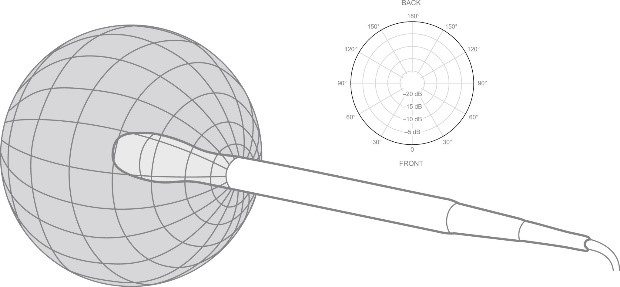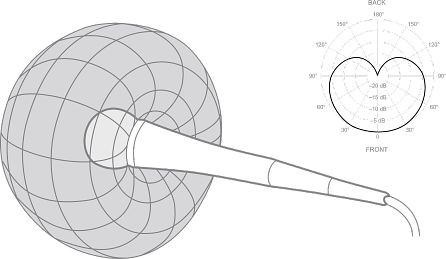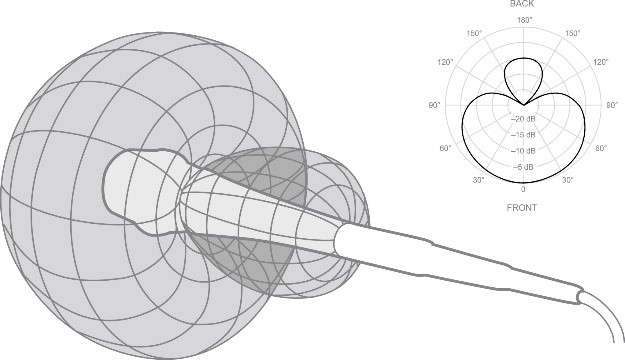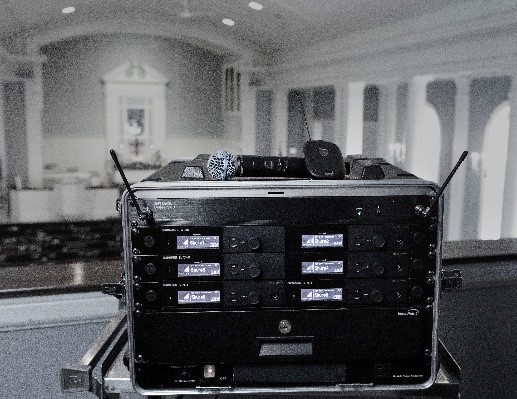Houses of worship aim to create an immersive experience for their congregation. Services are about sharing the message and empowering others to lift their voices in praise and song. From the vocalists to small instrument groups and clergy, all need to be heard clearly and precisely throughout the sanctuary.
For many small-to-medium-sized houses of worship, they may not be able to employ a dedicated audio technology team lead to help set up microphones and ensure there is no disconnect between what you hear and what you see. This means that the tools you do purchase and learn need to be adaptable and easy to set up. When purchasing mics and wireless systems to power them, there are several things to consider when making the right investment for your sanctuary space.
Understand Polar Patterns
Houses of worship have several different microphone needs — speakers, vocalists, instruments and more.
Every microphone has what’s known as a polar pattern — this is its inherent directionality and sensitivity to sounds arriving to its central axis. Before purchasing, evaluate your worship needs to determine what polar pattern will be the best fit. Microphone options include:
Omnidirectional Mics capture sound from all directions equally. However, they may pick up unwanted sounds and are the most prone to feedback. They are most commonly used for lavalier or head worn applications, where the microphone is kept close to the sound source.

Cardioid

Super-cardioid
Be sure to research how to minimize handling noise as it may vary depending on the use case. It is recommended that handheld mics used in worship settings have ample internal shock mounts and vibration control. Additionally, understanding the polar patterns will help audio teams guide vocalists and speakers on where to place the microphone to ensure clear sound. This varies based on speaking or singing as volume can dictate the distance between the mic and voice.

Wireless Microphones Need Wireless Systems
Wireless microphone systems are critical in contemporary worship services as wireless microphones are depended on by clergy and vocalists alike. Using a system allows you to remove the clutter of wires from the stage and encourages users to move freely about the worship space. Plus, you no longer have to worry about drilling unnecessary holes in walls and floors to accommodate cables. From simple analog wireless microphones to complex multi-channel digital microphone systems—there are many options to consider.
Regardless of the technology they use, all wireless systems need spectrum to operate.
Fortunately, there are many great sounding wireless microphone systems available today. When selecting between these mics, reliability should be one of your primary considerations. With the switch to digital in recent years, wireless systems can better transmit consistent sound with fuller dynamic range. The latest digital technologies also allow more reliable wireless audio channels to be used. Regardless of the technology they use, all wireless systems need spectrum to operate. Be sure to consult your vendor or manufacturer about the best available frequency band options for your area.
A good way to start choosing a wireless system is to consider the transmitters; how many people will need a microphone and of what type? Wireless handheld microphones integrate transmitters and vocal microphones into one device. This allows for a faster set-up and makes it easier for clergy, speakers, and vocalists to move around the sanctuary. Headsets, lavaliers, and instrument microphones need to be connected to a bodypack transmitter which can be worn by the user. Important to note, headsets can provide more volume before the system begins to feedback. On the other hand, lavaliers might provide more comfort for certain users. Both options allow for freedom of movement and engagement with the congregation, meaning the key message of the service won’t be missed.
The receiver side of the wireless system must have enough receiver channels to accommodate all the transmitters that might be used concurrently. It’s also a good idea to consider future expansion and the maximum channel count the system could handle if additional transmitters may be added later. A good tip for optimizing the performance of most wireless systems is to allow for a direct line of sight between the receiver antennas and the transmitters. Finally, think about long-term money-saving features. Wireless microphones and transmitters with rechargeable batteries are more sustainable and extend the life of your investment.

Consider Streaming
While thinking about your investments in wireless microphones, it’s also important to consider streaming needs, where sound sources must be captured and delivered to remote audiences. In today’s world, catering to the virtual audience is a must. The viewers on the other end want to engage and it’s important to make them feel like they are in the room even when they are elsewhere. The audio sources for streaming may include the same sources for local sound reinforcement but can be a different mix. When considering a system, be certain to think about all the different audio sources you want to have included in your live stream and recording.

Reliability
Reliability is key, especially if the microphones will be the workhorse of your House of Worship. A strong microphone paired with a wireless system can provide flawless audio to congregants physically in the sanctuary as well as those worshipping from home. This can give audio technology leaders peace of mind because they know they will have rock-solid wireless connectivity and superior performance—they no longer have to worry about unwanted feedback, distortion, or drop-outs.
Microphone audio technology should never get in the way or cause a distraction from worship. It’s imperative that the sound keeps the congregation engaged and focused on the key message of the service. Wireless systems and microphones make service set-up effortless and ensure a strong return on your investment.
Nick Wood, Senior Wireless Category Director at Shure, leads a Project Management team that defines a portfolio of wireless microphones, in-[ear monitors and software products.
As seen in our December 2021 Issue.





